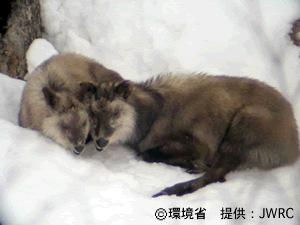Natural Heritage Conservation Systems
In Japan, there is no specific legislation exclusively covering Natural Heritage
Sites. Instead, there are various administrative systems responsible for Natural
Heritage Sites, for the purpose of maintaining their value for posterity. Existing
systems in place for the conservation of Natural Heritage Sites are identified
below.
Wilderness Areas
Wilderness areas where natural environment has maintained an ecological stability
without being influenced by human activities, and whose natural environments
are particularly in need of conservation. These areas are designated and managed
by the Minister of the Environment based on the Nature Conservation Law.
Nature Conservation Areas
Nature conservation areas are also protected areas that satisfy certain criteria,
such as having outstanding natural forests, and whose natural environments are
particularly in need of conservation. These areas are also designated and managed
by the Minister of the Environment based on the Nature Conservation Law.
Natural Parks (National Parks, Quasi-National Parks, and Prefectural Natural
Parks)
Natural parks are designated under the Natural Parks Law, which is intended to
preserve natural scenic areas and enhance the use of those areas, thereby contributing
to the public's health, recreation, and enlightenment. There are three types
of natural parks: National Parks, Quasi-National Parks, and Prefectural Natural
Parks.
Forest Ecosystem Reserves
Forest Ecosystem Reserves are established and managed in the national forests
by the Forestry Agency based on the Law on the Administration and Management
of National Forests. The goals are to maintain the natural environment consisting
of forest ecosystems, to protect plants and animals, to preserve genetic resources,
to promote technological development for forest management and to contribute
to academic research. This is achieved by protecting primeval natural forests
of substantial sizes that represent particular forest types in Japan.
Natural Monuments
| |
 |
| |
Japanese serow Capricornis crispus
Special Natural Monuments
|
Natural Monuments are designated by the Minister of Education, Culture, Sports,
Science and Technology based on the Law for the Protection of Cultural Properties.
Among the entities to be protected are animals (including their habitats, breeding
places, and summer and winter resorts), plants (including their habitats), and
geological features and minerals (including the grounds where peculiar natural
phenomena are seen), which possess a high scientific value in Japan. Those of
particular importance may be designated as Special Natural Monuments.
Regional Liaison Committee and Management Plan of Heritage
For the proper and smooth management of the Natural Heritage sites, it is necessary
to ensure close collaboration between the administrative agencies that manage
various the conservation systems mentioned above. For this purpose, each World
Natural Heritage site has established a Regional Liaison Committee organized
with the Ministry of the Environment, Forestry Agency and other related organizations.
Each site has a Management Plan of Heritage Site that clarifies the basic policies
for operation of the systems and promotion of programs. Respective plan has been
developed, in consideration of comments obtained in meetings with local residents
and public letters as well as in consultation with authorities.
At each Natural Heritage site, management activities that include patrolling,
promoting appropriate utilization, disseminating information, providing environmental
education, and research and monitoring are implemented based on the Management
Plan through close collaboration between the relevant administrative agencies
and related organizations. Moreover, base facilities including the World Heritage
Conservation Center and the Forest Environment Conservation Center are also provided. |